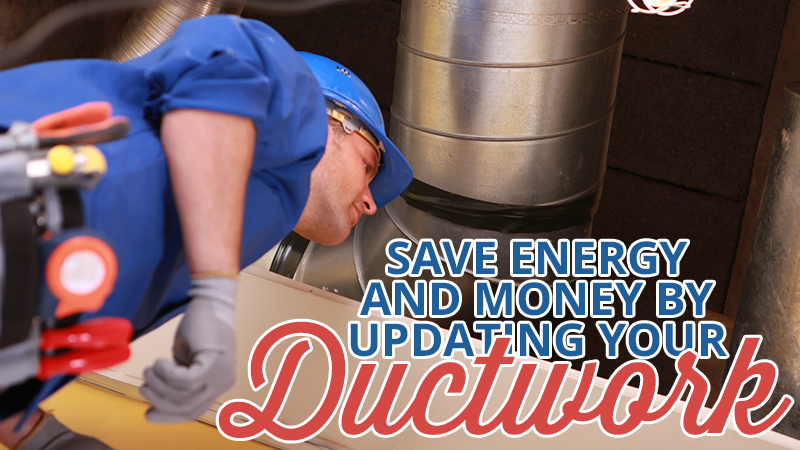
by RevContent | Jan 28, 2016 | HVAC Contractor
You’ve heard that leaky ductwork is inefficient, but do you realize that replacing faulty ducts can save you a good deal of money on an ongoing basis? If you live in an older home that has never benefited from a ductwork upgrade, or a newer home that seems to have poorly designed ductwork, then there could be significant savings in your future! Cost Savings Your heating and cooling bills can be some of the most expensive parts of owning your home, especially in periods of peak usage like late winter and mid-summer. If your energy bills over the past few years have skyrocketed with no real change in your habits, your ducts may be to blame. While it would be nice to think that everyone can get a huge benefit from upgrading their ducts, you need to have a qualified HVAC contractor review your particular situation and make a recommendation before you decide to make major changes. Stay Healthy Inside Poor ductwork may be more than just a money drain — they may also be costing you and your family your health. Dirty air can infiltrate ducts and contaminate your indoor air. If you have dust or pollen allergies, this type of backdraft can make those problems even worse. Mold is another concern with aging ductwork and one that also can cause an allergic reaction. Some types of mold are quite toxic and can cause an excessive reaction, a problem that repairing or replacing those old ducts can really help alleviate. Dash Those Hot Spots If there are certain places in your home that you just cannot seem to get cooled...

by RevContent | Jan 14, 2016 | Furnace, HVAC Contractor
Keeping your home toasty warm in the winter is serious business, and you want to be sure you’re getting the very best heating option for your particular circumstances. The two key types of heating sources prevalent in America today are a heat pump and a furnace. While both options are excellent for different reasons, depending on your needs, one is bound to jump out as the perfect solution for you. Type of Fuel and Efficiency Heat pumps are powered only by electricity while furnaces have a range of different options. If you live somewhere without easy access to natural gas, propane or fuel oil, and aren’t interested in chopping wood for a wood furnace, your only option is an electric heat pump. If you live in the city, you will definitely have more options. Heat pumps are much more energy efficient when compared to a gas fireplace. Where You Live Depending on the part of the country that you live in, one particular type of heating mechanism may be better than the other. Heat pumps are best for locations that have relatively mild winters as they can lose efficiency when the temps get too cold. Electric heat is not able to keep up with extremely cold weather, so a furnace is your best option if you’re high in the mountains or in the northern states. Safety While both heating options are quite safe, the heat pump has the added benefit of not producing carbon monoxide gases. Heat pumps don’t have any combustible parts either, unlike a furnace. Furthermore, the air quality may be better with a clean-running heat pump....

by RevContent | Dec 17, 2015 | Furnace
If you have a gas HVAC system, you know that it has many benefits, such as energy efficiency and fewer greenhouse gas emissions. You might even think that your gas heating system is maintenance free. While it does typically require less maintenance than oil burning furnaces, your gas HVAC system should be serviced annually. Follow these tips for handling problems that may arise. Weak or Poorly Functioning Pilot Light If the pilot light on your gas heater is weak, flickering, or goes out entirely, your heater needs immediate attention. Here are the most common reasons for pilot light problems. Improper Air Mixture: Healthy pilot lights have a steady blue flame. Natural gas flames may have a slight yellow tip to the flame. If your flame is yellow, flickers or makes excessive noise, there is likely too much or too little air in the gas mixture. Shut off the gas supply and call your HVAC contractor at Metro Comfort Systems to adjust the air flow in the gas line. Clogged Lines: If the flame on your pilot light is small or goes out completely, you may have a clogged line or clogged connections in your gas heater. That means it is time to call in the professionals to give your system a proper cleaning. Do not try to rectify clogged lines yourself. Your HVAC contractor has the tools and expertise to do this safely. Out of Gas: Before you assume there is a problem with your gas heater, always check that you have gas in the tank. Calling the HVAC contractor in the middle of the night to repair a system...
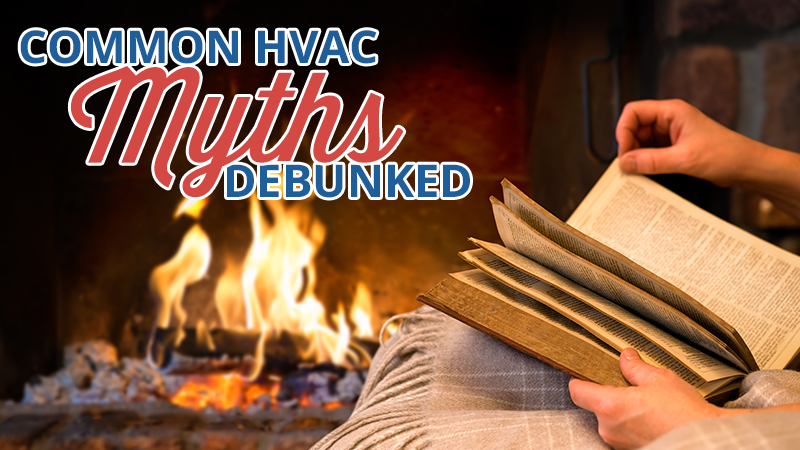
by RevContent | Dec 3, 2015 | Furnace
Under ideal conditions, your HVAC system keeps you warm and toasty in the winter. But sometimes things go awry and your system doesn’t function as well as it should. You may be surprised to learn that your false beliefs about your HVAC system may be keeping it from performing at its peak. Check out these common myths and get the facts about how your HVAC system works. Myth: You Can Clean Your Air Filters Instead of Replacing Them If you are only concerned with how clean your air filters look, vacuuming them will do the trick, but when it comes to the efficiency of your heating system, looks aren’t important. Vacuuming removes surface dirt, but it doesn’t remove the fine particles trapped in the filter. Your furnace will still have a difficult time forcing air through the filter. To keep your furnace running smoothly, replace the air filter at least once per year or as recommended by your HVAC technician. Myth: You Should Close the Vents to Unused Rooms It seems logical to close the vents to rooms you are not using to avoid wasting heated air. But the truth is that closing off vents in rooms disrupts the air pressure in the duct work and causes your system to work harder to do its job. Adjust the dampers in the duct work to each branch instead. These dampers are typically located at the beginning of each branch of duct work and can be adjusted by a simple turn of the handle. Typically a handle that is parallel to the duct work is fully open and a perpendicular handle indicates the...
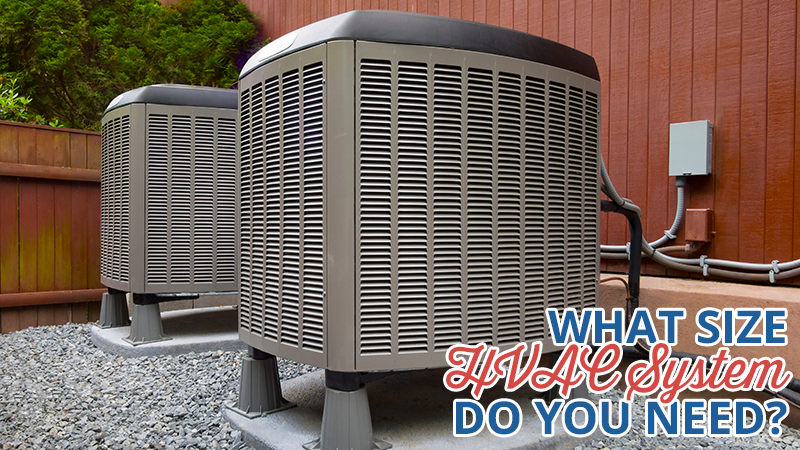
by RevContent | Nov 12, 2015 | Uncategorized
You depend on your central air conditioning and heating system to keep you cool in the summer and warm in the winter. Under normal circumstances, that is exactly what it does. There are times, however, when your cooling or heating efficiency may suffer, leaving you wondering if you have the right size system for your home. One size does not fit all You might be tempted to think that the heating and cooling system your friend or neighbor raves about is right for you, too. But when it comes to heating and cooling systems, one size does not fit all. The size and condition of your home has a big impact on how easy it is to heat or cool. Unless you live in a housing development where all the homes are the same size and in the same condition, forget using your neighbor’s experience in determining the right size heating and cooling system for you. Determining the Size of an HVAC System While there are formulas to follow to get a quick rule of thumb for the size of the HVAC system you need, there are many factors beyond the square footage of your home that must be considered. Consider these factors when deciding whether your current heating and cooling system is the right size for you: Geographic Location. The outside temperature is a major factor when considering heating and cooling of your home. Those who live in the south may require a larger cooling system, while heating is the main factor for those who live in the north where temperature drop to subzero levels in winter. Age of Your...

by RevContent | Oct 29, 2015 | Uncategorized
If you are in the habit of battening down the hatches to keep your home cool in the summer and warm in the winter, you may be putting your family at risk with indoor air pollution. There is a fine line between sealing air leaks and making your home so airtight that no fresh air infiltrates the building. Fortunately, there are a number of things you can do to improve indoor air quality without compromising your heating and cooling system. Exhaust Fans Using exhaust fans in the kitchen and bathroom pulls stale air and toxins out of the home. Get into the habit of using the kitchen fan when you cook as it will remove cooking odors and pollutants released from burning propane or natural gas. In the bathroom, exhaust fans pull out moist air, reducing the risk of mold and mildew growth in moist areas. Both mold and mildew can contribute to indoor air pollution and lead to serious health risks. Air Filters It might be tempting to buy the least expensive air filters for your heating and cooling system, but these filters typically do not remove small particles from the air. Buying a HEPA filter will cost a little more, but it will also remove allergens and pollutants. If you have pets or smokers in the home, a HEPA filter will go a long way toward reducing allergens and improving indoor air quality. Ask your HVAC contractor about installing HEPA filters during your regular cleaning and keep some on hand for changing the filter when it gets dirty during the year. Open Windows Opening your windows for a...
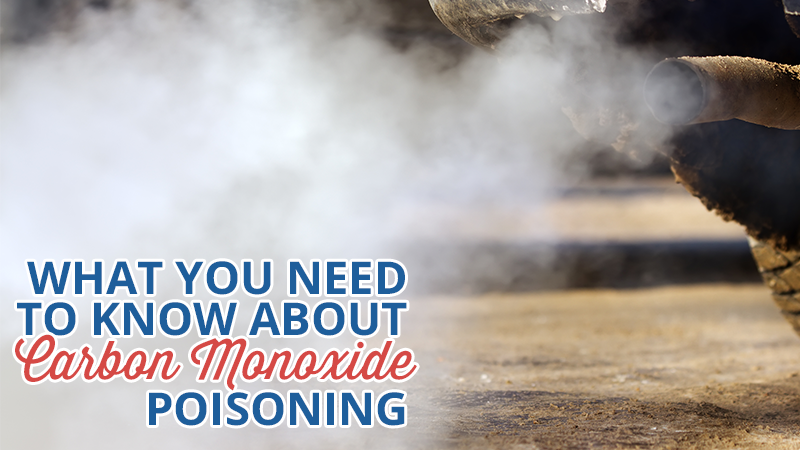
by RevContent | Oct 15, 2015 | Furnace, HVAC Contractor
Carbon monoxide (CO) poisoning is the number one cause of poisoning deaths in the U.S., claiming about 500 lives annually. Since the gas that causes it is colorless, odorless and tasteless, it’s a sneaky killer. Burning wood, gas, oil, charcoal or kerosene as fuel always produces some carbon monoxide. However, carbon monoxide is dangerous only in high concentrations. Common symptoms of carbon monoxide poisoning are headache, dizziness, vomiting, nausea, chest pain and impaired thinking. Learn how to keep you and your family safe from CO poisoning. What Makes Carbon Monoxide Deadly Carbon monoxide kills only when (1) faulty equipment causes incomplete fuel combustion, resulting in a build-up of carbon monoxide to unsafe levels and (2) the gas has nowhere to escape. Carbon monoxide poisoning occurs more often in homes than in commercial buildings because the latter have better air circulation than homes. People die of carbon monoxide poisoning because the gas displaces the oxygen in their cells. They become sleepy and never wake up. A number of appliances and situations around the home are potential sources of carbon monoxide poisoning: HVAC units, including furnaces and heat exchangers; gas stoves and ranges; wood-burning stoves; idling vehicles in closed garages; portable space heaters, stoves, grills and other unvented appliances; a gas stove used for heat rather than cooking; paint remover containing methylene chloride, which changes into carbon monoxide in the body; fireplaces; and small engines. How to Prevent Carbon Monoxide Poisoning Preparation, awareness and observation prevent CO poisoning. First, get a carbon monoxide detector. Make sure you get one that meets standards set by Underwriters Laboratory (UL) or International Approval Service (IAS). These approved alarms have an audible warning signal. Have an HVAC contractor...
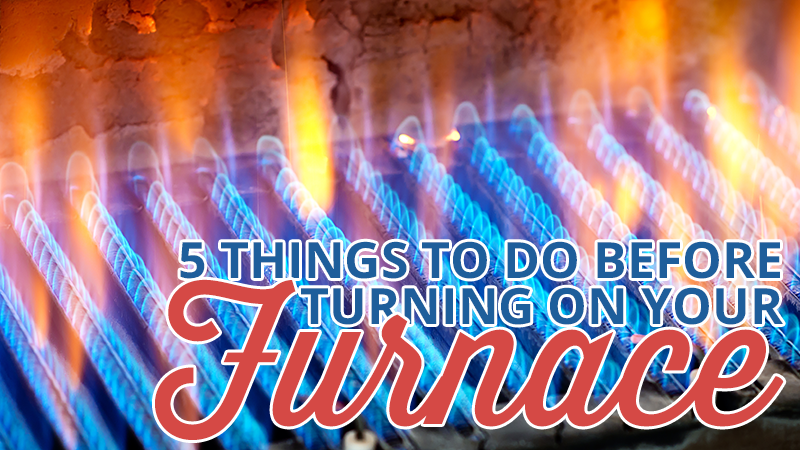
by RevContent | Oct 1, 2015 | Furnace, HVAC Contractor
Your furnace has been out of commission since last winter, so it’s important to bring it up to speed before you start blasting the heat again. If you turn on your heating equipment without taking the proper precautions first, you could face blockages, gas or fluid leaks, unpleasant odors, indoor pollution and discomfort, excessively high energy bills, and even dangerous electrical hazards. Prevent these problems by making sure your furnace is in working order before winter arrives. Just follow these five steps and you will be good to go. 1. Schedule an HVAC Inspection Regular maintenance is the most effective way to avoid freezing nights, high energy bills and unnecessary furnace/AC repair expenses. Before you make the switch to heat, make sure an HVAC contractor checks out your furnace first. At Metro Comfort Systems, our technicians are trained to keep your system efficient by spotting problems early, maintaining the correct fluid levels, replacing filters and faulty parts and cleaning out loose debris and build-up. 2. Change Your Filter and Stock Up On Replacements Your indoor air quality depends on the condition of your filter, which traps dirt, dust, allergens and other pollutants before they reach your indoor spaces. Clogged filters also reduce the efficiency of your entire HVAC system. Start your winter with a fresh filter, and make sure you’re ready to replace it throughout the season. Your furnace filter should be checked monthly and replaced every one to three months. 3. Clear the Area Your HVAC contractor will remove any dust, sludge, or debris inside the furnace itself. However, interior buildup isn’t the only kind that decreases efficiency and...

by RevContent | Sep 17, 2015 | Uncategorized
You might not think that the decorating choices you make can have an impact on your energy bill. The truth is, everything from your curtain selection to where you invest in landscaping can make a big difference come bill time. Add Window Dressings Choosing the right window dressings can keep your home cooler in the summer heat and warmer during the winter. Choosing heavier, darker drapes and keeping them closed during the heat of the day will shade your living space and keep it cooler. If you don’t like drapes, try blinds. In the winter, these same drapes can block cold drafts, giving your rooms a warmer, cozier feeling. Banish Carpeting Interior design trends these days lean toward removing carpeting from living spaces to improve aesthetics and resale value. Allergy and asthma sufferers also greatly benefit from installing wood floors over having carpet in the home. Carpet traps allergens, heat and humidity that would otherwise escape through the flooring of the home. Installing wood flooring has the additional benefit of keeping your home airy, breezy and cooler than those with traditional carpeting. Change Your Lighting Harsh overhead lighting is often unflattering and also adds several degrees to the temperature of the room. If you are trying to beat the heat, turn off the overhead lights and use smaller area lamps instead. These will provide enough light for reading or general activities without heating up the room on an already warm summer evening. Carefully Plan Landscaping Trees are nature’s first and best sun blockers. Large shade trees provide a place for kids to play in the grass, safe from the sun’s rays, but they also can shade your home and...
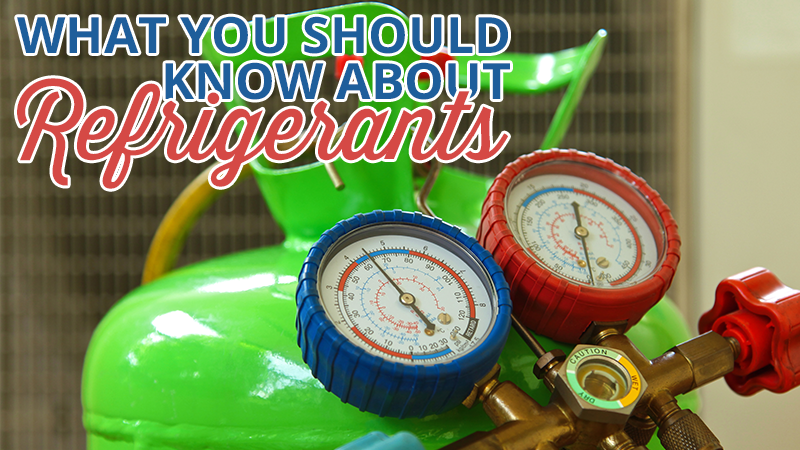
by RevContent | Sep 3, 2015 | Uncategorized
Over the past 28 years, developed countries have been working to reduce their production and consumption of CFCs (chlorofluorocarbons), which are known to deplete the ozone layer and contribute to global warming. The Montreal Protocol, which was signed in 1987, requires nations to achieve a certain percentage of progress towards the total phaseout of CFCs. Included in the soon-to-be-phased out CFCs is HCFC-22, also known as R-22, a colorless gas commonly used as a refrigerant. As of 2015, R-22 is no longer allowed to be installed in new air conditioners or HVAC systems. In fact, the production of R-22 will cease entirely at the end of 2019, and this can have an impact on your HVAC unit. What Can Consumers Do About the End of R-22? Between now and 2019, consumers don’t necessarily need to panic. The refrigerant is still available, and if an HVAC system should need recharging, your HVAC contractor can continue to use R-22 for that purpose. If your HVAC system needs replaced, however, then consumers should pay attention to the refrigerant that comes with the new device. In just a little over three years, R-22 will not be available. If you buy a new HVAC system that has R-22 installed in it and it needs repair, it may in fact need to be replaced because R-22 will not be available. It is important to point out that not all HVAC repairs require refrigerant. Many are simple part replacements that do not involve the condenser. HVAC and the Clean Air Act The HVAC and AC repair industry is switching from HCFCs to non-ozone depleting chemicals. The new poster child for HVAC...












Recent Comments